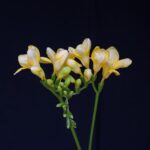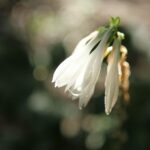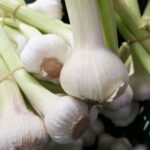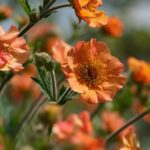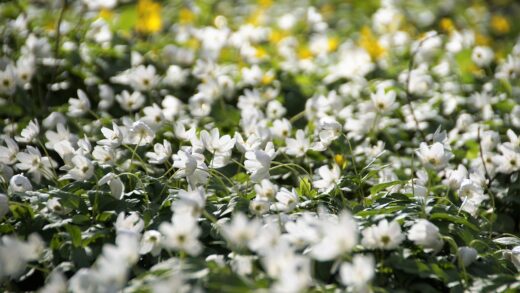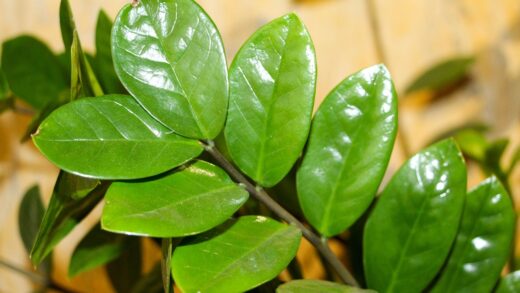The Abyssinian gladiolus, also known as the fragrant gladiolus or by its scientific name Gladiolus callianthus (formerly Acidanthera murielae), is a truly special and elegant plant that can enhance any garden with its exotic appearance and intoxicating fragrance. It originates from the mountainous regions of East Africa, where after the summer rains, it unfurls its snow-white, star-shaped flowers decorated with a maroon blotch in the throat. With proper care, you too can be part of this wonder, and this seemingly fragile, yet grateful beauty can become the jewel of your garden. Get to know this plant more closely so that by uncovering all its secrets, it rewards you each year with the richest possible flowering. Its care requires some attention, but the end result is worth every effort, as there are few summer flowers that can compare with it in elegance and fragrance.
From a botanical point of view, it belongs to the Iridaceae family and is a close relative of the well-known garden gladioli, but it differs significantly from them in appearance and fragrance. While traditional gladioli are often robust and brightly colored, the Abyssinian gladiolus represents a more airy, finer beauty. Its slender stems usually develop 6-12 flowers that open gradually, so you can expect a long flowering period. Its special fragrance is most noticeable in the evening hours, filling the garden and terrace with a fine, sweetish aroma.
In its natural habitat, on the mountain meadows and rocky slopes of Ethiopia and Malawi, it blooms during the summer monsoon, when abundant rainfall and warm weather prevail. These conditions also determine its needs in the garden: it loves sun, well-drained soil, and regular watering during the growing season. Although it is of exotic origin, it can be successfully grown in our climatic conditions, provided you follow a few basic care rules, especially regarding overwintering, as it is not winter-hardy here.
Growing Abyssinian gladiolus is not just a gardening task, but also a kind of relationship building with this special plant. Observing its development, providing it with optimal conditions, and then enjoying its flowers and inhaling its sweet fragrance – all this fills the gardener with joy. In this article, I will guide you in detail through all the important steps of caring for the Abyssinian gladiolus, so that you too can experience this wonderful feeling and be proud of this unique plant in your garden.
Choosing the Ideal Planting Location
One of the most important factors for the Abyssinian gladiolus is the right amount of sunlight. This plant is decidedly sun-loving, so choose a spot in your garden where it will receive at least 6-8 hours of direct sunlight per day. In shadier, semi-shady locations, its growth may be slower, and flowering may be absent or significantly sparser. South and southwest-facing positions are usually ideal for it, where the sun’s rays reach it for the longest time.
More articles on this topic
Soil quality is also crucial for the healthy development of the Abyssinian gladiolus. It prefers well-drained, loose, humus-rich soils. Standing water can be fatal for the corms, as it can easily cause rot. If the soil in your garden is compact and clayey, be sure to improve it before planting with sand, compost, or well-rotted manure to ensure adequate drainage and nutrient content. The ideal pH value is slightly acidic or neutral (pH 6.0-7.0).
Although it loves heat and sun, it is advisable to protect it from strong, stormy winds. Its slender, tall stems and the flowers that develop on them can be easily damaged or even broken by stronger gusts of wind. Plant it in a sheltered spot, for example, next to a wall or fence, or in the lee of taller, bushy plants. If such a possibility does not exist, it may later be necessary to stake the flower stems to prevent them from lodging.
The choice of companion plants can also be an important aspect if you plan to plant it in a mixed border. It looks good with other summer flowers, for example, annuals or lower perennials that will not crowd it and will not compete excessively with it for light and nutrients. Make sure that the neighboring plants have similar requirements in terms of soil and water supply. In addition to aesthetic harmony, a good combination can also help to repel pests.
Preparing and Planting the Corms
The basis for healthy and vigorous plants is good quality planting material, so pay special attention to the selection of corms. When buying, look for corms that are firm, intact, and free of mold spots, damage, or signs of rot. Larger corms usually produce more flowers and develop more vigorously. Obtain them from reliable garden centers or online sources to be sure of quality and varietal authenticity.
More articles on this topic
The ideal planting time is after the last spring frosts, usually from late April to mid-May, when the soil has warmed up sufficiently (at least 10-12 °C). Planting too early in cold, damp soil can lead to corm rot. If you want to be sure, wait until daily temperatures consistently exceed 15 °C. Some gardeners also try forcing, by planting the corms in pots in a bright, warm place, which can result in earlier flowering.
Planting depth and spacing are also important factors. As a general rule, plant the corms about 8-10 cm (3-4 inches) deep, with the pointed tip декораfacing upwards. The distance between the corms should be at least 10-15 cm (4-6 inches), so that the plants have enough space to develop and adequate air circulation is ensured, which helps to prevent fungal diseases. If you plant them in groups, you will achieve a more impressive effect than if you plant them individually.
Soil preparation before planting is essential. Thoroughly dig the selected area to a depth of at least 20-25 cm (8-10 inches) and incorporate well-rotted compost or good quality flower soil to improve the soil structure and nutrient content. If your soil tends to retain too much water, adding a layer of sand or fine gravel to the bottom of the planting hole can help improve drainage. Thorough preparation will be rewarded with vigorous plant growth.
Watering Guide
The water needs of the Abyssinian gladiolus vary depending on the growth stage. After planting the corms, water only moderately at first until the shoots appear, to avoid rot. As soon as the plant begins to grow actively and leaves appear, as well as during the development of the flower stems and flowering, it requires regular and abundant water supply. Keep the soil evenly moist, but it should not be waterlogged.
The best watering practices include watering early in the morning or late in the afternoon, when evaporation loss is lower. Water directly at the base of the plant, soaking the soil deeply so that the water reaches the root zone. Avoid wetting the leaves and flowers, especially in the evening, as this promotes the development of fungal diseases such as powdery mildew or gray mold. One thorough, deep watering is better than several shallow ones.
It is important to recognize the signs of overwatering and underwatering. The most common symptom of overwatering is yellowing and wilting of the leaves, cessation of growth, and root rot. In an underwatered plant, the leaves also wilt, turn brown at the edges, and flowering may be weak or the buds may dry up. Observe the reactions of your plants and adjust the frequency and amount of watering to the weather conditions and soil state.
To conserve moisture in the soil, apply mulch. Spread a 5-7 cm (2-3 inches) thick layer of organic mulch, such as pine bark, compost, or straw, around the plants, making sure that the mulch does not come into direct contact with the stems. Mulch not only retains water in the soil but also helps to control weeds and stabilize the soil temperature, which is particularly useful during hot summer days.
Nutrient Supply and Fertilization
The Abyssinian gladiolus will appreciate regular nutrient supplementation, especially during the period before and during flowering. To flower abundantly and develop healthy corms for the next year, it needs balanced nutrients. The most important macronutrients are nitrogen (N) for leaf development, phosphorus (P) for root and flower formation, and potassium (K) for general resistance and flower quality. In addition, in smaller amounts, it also needs micronutrients.
Choose a good quality fertilizer designed for flowering plants, which has a balanced NPK ratio, or one in which the phosphorus and potassium content is slightly higher. Avoid fertilizers excessively rich in nitrogen, as they can lead to lush foliage at the expense of flowering. As an organic alternative, you can use well-rotted compost, bone meal (rich in phosphorus), or wood ash (rich in potassium), which should be carefully incorporated into the topsoil.
Start fertilizing when the shoots reach a height of 10-15 cm (4-6 inches) and repeat every 2-3 weeks until flowering. After flowering ends, do not add any more nutrients, so that the corms can mature properly for winter dormancy. Always follow the instructions on the packaging of the chosen fertilizer regarding dosage and application method. Liquid fertilizers are usually applied diluted in watering water, while granular fertilizers are spread evenly around the plants, then incorporated into the soil and watered.
It is important to avoid over-fertilization, as it can cause more harm than good. Too many nutrients, especially in the case of artificial fertilizers, can burn the roots, which can lead to the death of the plant. Signs of over-fertilization can be leaf burn, sudden cessation of growth, or general weakening of the plant. If you suspect over-fertilization, thoroughly rinse the soil with clean water to remove excess salts.
Supporting Growth and Care
As the Abyssinian gladiolus grows and begins to develop its slender flower stems, it may become necessary to stake them, especially in windy locations or if the plants grow particularly tall. Under the weight of the flowers, the stems can bend or even break. You can use thin bamboo stakes, metal plant supports, or special flower supports. Carefully insert the stake into the soil next to the plant before the flower stem is fully developed, so as not to damage the corm or roots.
Regular removal of faded flowers, i.e., “deadheading,” is useful for several reasons. On the one hand, it makes the plant aesthetically more attractive, and on the other, it prevents the plant from wasting energy on seed production, directing it instead to the development of more flowers or to the strengthening of the corm. Carefully pinch or cut off the faded flowers from the stem, taking care not to damage the developing buds. If the entire inflorescence has faded, you can also cut back the flower stem.
Weeds constantly compete with cultivated plants for water, nutrients, and light, so regular weeding around the Abyssinian gladiolus is important. Weed removal is especially important during the active growth phase. If possible, weed by hand, carefully pulling the weeds out with their roots so as not to damage the shallow roots or corms of the gladiolus. Mulching can greatly help in weed control, reducing the time spent weeding.
Regular inspection of the plants helps in the early detection and treatment of possible problems. Observe the leaves, stems, and flowers, looking for signs of stress, diseases, or pest infestation. Changes detected early, such as yellowing of the leaves, spots, or the appearance of pests, are often easier to resolve with prompt intervention. Proactive care contributes to maintaining the health of the plants and to abundant flowering.
Pest and Disease Control
The Abyssinian gladiolus is attacked by relatively few pests, but it is worth paying attention to some of them. The most common problem can be caused by thrips, which are small, flying insects that suck the sap from leaves and flowers, leaving behind silvery spots and deformations. In addition, aphids and spider mites can also appear, especially in warm, dry weather. Early detection of pests is crucial for effective protection.
When controlling pests, strive for environmentally friendly solutions. In case of a mild infestation, washing the pests off with a jet of water or spraying with an insecticidal soap (potassium soap) solution can help. Neem oil-based preparations can also be effective against many pests. In case of a more severe infestation, if biological methods do not yield results, you can consider the use of targeted, systemic, or contact insecticides, always following the instructions for use and safety precautions.
Among fungal diseases, the most common are gladiolus rust, botrytis (gray mold), and corm rot. Rust causes orange or brown pustules on the leaves, while botrytis forms a gray, moldy coating on flowers and leaves, especially in humid, sultry weather. Corm rot is most often caused by overwatering or poorly drained soil. Prevention is also key here: ensure good air circulation between plants, avoid watering the leaves, and plant in well-drained soil.
To prevent diseases, it is important to apply proper agrotechnics. Pay attention to crop rotation; if possible, do not plant gladioli in the same place for several consecutive years. Dry the corms thoroughly before storage and store only healthy, undamaged corms. Autumn leaf removal and immediate removal of infected plant parts also help to reduce the chances of pathogens overwintering. A healthy, well-cared-for plant is always more resistant to diseases and pests.
The Miracle of Flowering and Cut Flower Care
The flowering of the Abyssinian gladiolus usually occurs in the second half of summer, from August to September, and sometimes even until October, depending on the planting time and weather conditions. The slender stems, on which the star-shaped, snow-white flowers open one above the other, with their center adorned by a dark red or chestnut blotch, offer a breathtaking sight. The real magic, however, begins in the evening, when the flowers exude an intense, sweet fragrance reminiscent of jasmine, filling the garden and terrace.
If you want to use it as a cut flower, the best time to cut the flowers is early in the morning or late in the evening, when the plant is more saturated with water. Choose stems on which the bottom 1-2 flowers have already opened and the rest are still in bud. Cut the stems obliquely with a sharp knife or pruning shears to increase the water absorption surface. Place them immediately in a bucket of water to avoid the formation of air bubbles in the stem, which would hinder water absorption.
To increase the vase life of cut Abyssinian gladiolus flowers, you can take a few simple steps. Before placing them in the vase, cut 1-2 cm (about 0.5-1 inch) from the stem ends under water. Remove the leaves that would be below the water level to prevent rot and water contamination. Use a floral preservative in the vase water or make your own by adding a little sugar and a few drops of bleach. Change the water daily or every other day and, at the same time, always trim a little off the stem ends.
The Abyssinian gladiolus also looks wonderful as a cut flower and can be an elegant, fragrant ornament for your home. It looks beautiful even in a simple glass vase, but it also holds its own in mixed bouquets. Place the vase in a spot where you can admire it often and where its fragrance can be appreciated, but avoid direct sunlight and drafts, as these can shorten its lifespan. The cloud of fragrance brought into your home will remind you each time of this special jewel of your garden.
Lifting and Overwintering Corms
The Abyssinian gladiolus is not winter-hardy in our region, so its corms must be lifted before the first frosts and properly overwintered. The ideal time to lift the corms is usually late October or early November, after the plant’s leaves have yellowed and dried, but before the soil freezes permanently. This is a sign that the plant has completed its growing season and that the corms have stored enough nutrients for winter dormancy and next year’s growth.
Lifting the corms requires care. With a garden fork, loosen the soil around the plant at a sufficient distance so as not to damage the corms. Carefully lift the entire plant with the corm out of the soil. Shake off excess earth, but do not wash them, as moisture can cause rot during storage. Cut the stem about 5-10 cm (2-4 inches) above the corm.
The lifted corms must be thoroughly dried, or “cured,” before storage. Spread them in a single layer in a well-ventilated, dry, frost-free place, such as a shed, garage, or covered terrace. Let them dry for a few weeks (2-3 weeks) until the rest of the stem and roots are completely dry and can be easily removed. Then, carefully clean the corms of dried earth, old roots, and stem residues. At this time, you can also separate any small daughter corms (cormels) that may have formed, which can be stored separately and planted in the spring.
The cleaned and dried corms should be stored in a cool, dry, dark, and well-ventilated place during the winter months. The ideal storage temperature is between 5 and 10 °C (41-50 °F). You can store them in paper bags, cardboard boxes, or net bags, or possibly in a crate lined with a layer of dry peat, sand, or sawdust to protect them from desiccation and frost. Check the corms occasionally during the winter and remove any rotting or moldy specimens immediately to prevent the spread of infection.
Propagation Methods
The most common and simplest method of propagating the Abyssinian gladiolus is by using daughter corms, also known as cormels. These small corms form at the base or on the side of the main corm (mother corm) at the end of the growing season. When you lift and clean the corms in the autumn, these small daughter corms can be easily separated. Collect them and, like the large corms, overwinter them in a dry, cool place.
In the spring, you can plant the daughter corms similarly to the large corms, but a little shallower (about 3-5 cm or 1-2 inches deep) and more densely in a separate bed or pot. In the first year, a flowering plant usually does not yet develop from these small corms; instead, they direct their energy more towards corm growth. With regular watering and nutrient supply, they can reach flowering size in 1-3 years, so, with patience, you can grow new and new fragrant gladioli yourself.
The Abyssinian gladiolus can also be propagated by seed, although this is a longer and more challenging process, and the varietal characteristics are not always perfectly inherited, especially in hybridized varieties. You can collect the seeds from the capsules that form after the flowers fade, once they have dried. In the spring, sow them in good quality seedling compost, covering them lightly. Germination can take several weeks, and the seedlings require special care. Plants grown from seed usually need 3-4 years to reach flowering age.
For larger, older corms, division of the corms can also be considered, although it is a less common method for this species. If a corm has grown very large and has several growing points (buds), in the spring, before planting, you can carefully cut it into two or more parts with a sharp, sterilized knife. Ensure that each part has at least one bud and a sufficient portion of the corm to provide nutrients. Let the cut surfaces dry for a few hours or treat them with charcoal powder to prevent infections before planting them.
Abyssinian Gladiolus in Garden Design
The Abyssinian gladiolus, with its elegant appearance and slender habit, is excellently suited to adding a vertical accent to flower beds. Its height is usually 60-90 cm (24-36 inches), so it fits well in the middle or back part of mixed borders, where, rising above the other plants, it can display its star-shaped flowers. Plant it in groups, placing at least 5-7 corms close to each other, to achieve a denser, more impressive effect. Isolated specimens might get lost among the other plants.
In terms of colors, the snow-white flowers with the dark red throat blotch combine exceptionally well with other plants. They look particularly beautiful in the company of plants with dark green or burgundy foliage, which create contrast and emphasize the delicacy of the flowers. It combines well, for example, with ornamental grasses, whose airy appearance harmonizes with it, or with lower, cushion-forming perennials such as thyme or violet, which cover the soil and frame the flowers. Due to its late summer flowering, it combines well with plants that flower at the same time or a little earlier, thus ensuring a continuous display.
Due to its special fragrance, it is an ideal choice for fragrant gardens or near resting areas, terraces, windows, where you can often enjoy its sweet aroma, especially in the evening. Since it is an excellent cut flower, it is worth dedicating a small part of the garden specifically as a cutting garden, where you can abundantly grow flowers for the vase. This way, you will not have to regret cutting the most beautiful stems from the ornamental bed, and you can also decorate and perfume your home with them.
If you do not have a garden, or only a small balcony or terrace, you can successfully grow Abyssinian gladiolus in a pot as well. Choose a pot with a diameter and depth of at least 20-25 cm (8-10 inches), so that the corms and roots have enough space. Use good quality flower soil with good drainage and pay attention to regular watering and nutrient supply, as potted plants dry out more quickly and deplete nutrient reserves. The Abyssinian gladiolus in a pot can be a wonderful ornament for any sunny balcony or terrace.
Common Problems and Their Solutions
It may happen that the Abyssinian gladiolus does not flower, which can be due to several reasons. One of the most common causes is lack of light; if the plant does not receive enough direct sunlight (at least 6 hours a day), flowering may be absent. Even when planting very young, small corms, it may happen that they do not flower in the first year. Inadequate nutrient supply, especially phosphorus deficiency, can also inhibit flower formation. Ensure appropriate conditions, and in the next season, it will probably delight you with flowers.
Yellowing of the leaves can indicate various problems. If the yellowing occurs at the end of the growing season, in autumn, it is a natural process, the plant is preparing for winter dormancy. However, if the leaves turn yellow in the middle of the season, it may be a sign of overwatering, underwatering, nutrient deficiency (especially nitrogen or iron deficiency), or even some disease. Observe the other symptoms and environmental factors to find out the exact cause and be able to intervene appropriately.
The problem of weak, lodging stems can also occur, especially if the plant does not receive enough light and becomes etiolated. Excessive nitrogen fertilization can also result in lax, weak tissues. In addition, strong winds can easily knock over the tall flower stems. To prevent, ensure sufficient sunlight, a balanced nutrient supply, and, if necessary, stake the stems in time.
Corm rot during storage can cause significant losses. This is most often caused by improper preparation (insufficient drying), excessive humidity, poor ventilation, or too high storage temperature. It is important to store the corms only in a completely dry state, in a well-ventilated, cool (but frost-free) place. Check them regularly during the winter and remove any diseased specimens immediately to protect the others from infection.







